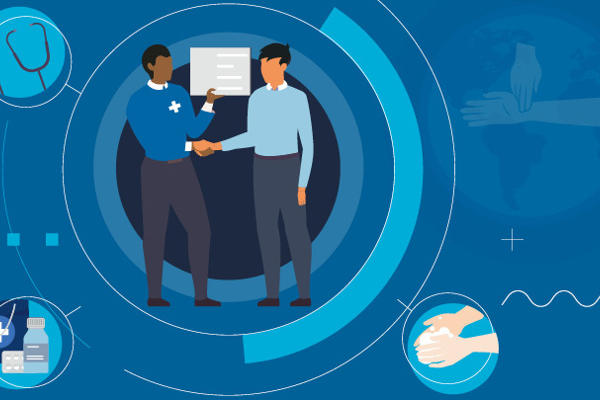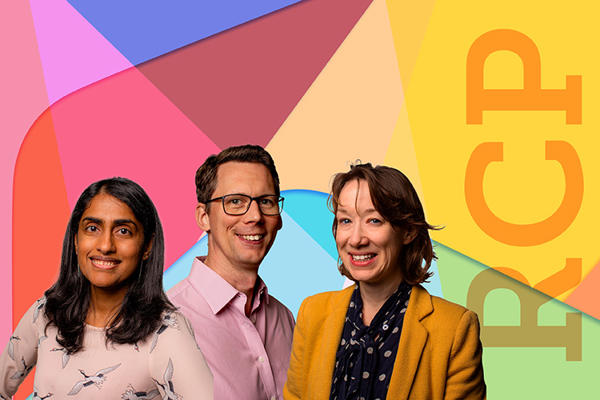With the 2021 Turner-Warwick lecturer scheme having just launched in all UK regions and nations, we thought this would be a good opportunity to look back at some of the previous winning projects and the trainee members who presented them.
(Listed alphabetically by surname)
Dr Louise Alexander, ST6, 2019 Turner-Warwick lecturer for Northern Ireland
Thrombectomy – a gamechanger for stroke in Northern Ireland
A mechanical thrombectomy service has been developed in the Royal Victoria Hospital (RVH) to enable the delivery of this treatment to Northern Ireland. A regional guideline was developed involving health trusts, the public health agency and the ambulance service. There has been a year-on-year increase in patients receiving thrombectomy. Sentinel Stroke National Audit Programme (SSNAP) figures show that for the year ending March 2018, the RVH site performed the fourth highest number of thrombectomy procedures (n=68). This accounted for 9% of all procedures performed despite the Northern Ireland population representing only 2.6% of the total catchment population covered by SSNAP. Between 2014 and 2017, 211 patients underwent thrombectomy.
Successful recanalisation was achieved in 83% with 56% being independent (modified Rankin Score 0–2) at 90 days. In conclusion, the RVH has developed a leading thrombectomy service, providing access to this life-changing treatment and providing favourable outcomes comparable to results from published trials.
‘I applied to the Turner-Warwick lecture scheme as it is an excellent opportunity to gain experience of presenting to a wide general medical audience and an opportunity to share recent advances in hyperacute stroke treatment with physician colleagues from the region I work in.’
Dr Azara Janmohamed, StR, one of the 2019 Turner-Warwick lecturers for London
A personalised, clinical pharmacological approach to acute and subacute management of severe hypertension in secondary care
Patients referred acutely to secondary care with severe hypertension are at increased risk of cardiovascular complications but may also be at risk from over-rapid blood pressure (BP) reduction. Patients referred from the emergency department (ED), ambulatory emergency care (AEC), GPs and inpatient admissions were reviewed by the clinical pharmacology team. Where possible, admissions were avoided, and inpatients were discharged promptly following treatment for early review in AEC. In AEC, medications were rationalised to achieve BP control, taking into account drug tolerability, adverse effects and patient choice. Relevant investigations, specifically for secondary hypertension, were ordered. Care was transferred to the outpatient clinic or primary care once BP was improving.
Ongoing patient-centred, personalised medicine prevents polypharmacy and promotes appropriate prescribing. This simple intervention is transferrable across the NHS and requires minimal resources.
‘This lecture provided a sharply focused moment to present my work in front of a large cohort of colleagues, and to receive immediate questioning and challenges to this particular approach to managing hypertension. As a prestigious award it has helped, and will continue to help, demonstrate the important role clinical pharmacologists play, which still needs greater recognition for the value they bring to medicine.’
Dr Kunal Mhapankar, CMT, 2019 Turner-Warwick lecturer for Wales
Polio India story: A testimony of indomitable spirit and unflinching resolve
Dr Mhapankar was deployed by the World Health Organization (WHO) in the Indian state of Bihar, that was infamous for its lawlessness, poor healthcare, high rate of virus transmission and disproportionately large number of polio cases, as well as for harbouring some of the most difficult geographical terrains in the world. His role was to ensure 100% coverage of children less than 5 years of age with the oral polio vaccine during supplemental immunisation or ‘pulse polio’ rounds, to maintain adequate surveillance of acute flaccid paralysis, to strengthen routine immunisation and to conduct mop-up rounds if needed. The world witnessed the realisation of the ‘impossible’ in March 2014 when the WHO declared the South-East Asia region, including India, polio free.
‘I personally found that the opportunity to present my work with the WHO as a Turner-Warwick lecturer not only allowed me to showcase my work but also provide recognition and acknowledgement to the thousands of vaccinators and grassroot-level workers who had toiled hard to achieve a polio-free India.’
‘When I read that the Turner-Warwick Lecture scheme is in honour of the first female president of the RCP, it made me realise that the scheme would offer an opportunity to people doing pioneering work in their field. I also felt that the world needs to know about the indomitable spirit of India and its battle against polio, and what better than this scheme to present it in front of a large audience.’
Dr Ayodele Sasegbon, St4, 2019 Turner-Warwick lecturer for North Western and overall winner for 2019
Neurostimulation and its emerging role in dysphagia recovery post stroke
Dr Sasegbon’s work began exploring if stimulation of the cerebellum, activated during swallowing, can improve swallowing after dysphagic stroke. This is important because the cerebellum is safer, quicker and easier to stimulate than the cortex. The first phase of his study was to determine if cerebellar stimulation can reverse loss of function induced by a ‘virtual lesion’, as a prelude to using cerebellar stimulation therapeutically. Healthy participants were intubated with a pharyngeal catheter. Swallowing performance was measured using a swallowing reaction time task. Participants received repetitive transcranial magnetic stimulation (rTMS) to the pharyngeal motor cortex which elicited the greatest electrical response. This is known to disrupt swallowing behaviour.
Participants were randomised to receive pulses of cerebellar rTMS to the ipsilateral side (to the virtual lesion), contralateral side or sham and swallowing performance was measured. Swallowing accuracy was significantly better for ipsilateral and contralateral rTMS compared with sham; contralateral stimulation had a greater positive effect. This suggests cerebellar rTMS may be useful in dysphagic stroke.
‘Being selected to deliver the Turner-Warwick lecture was surprising as well as being an honour. I have long felt the neurostimulatory work I am involved with is exciting – but anything can seem exciting if you are closeted away in a lab for a period of time – and it was heartening to find that others felt the same way.’
Get involved with the Turner-Warwick lecturer scheme for trainees
All UK regions and nations are now open for abstract submissions for the 2021 Turner-Warwick lecturer scheme. Details about applying, and the deadline for your local area, can be found on the dedicated Turner-Warwick lectures web page. Enquires can be emailed to UKregions@rcplondon.ac.uk.





